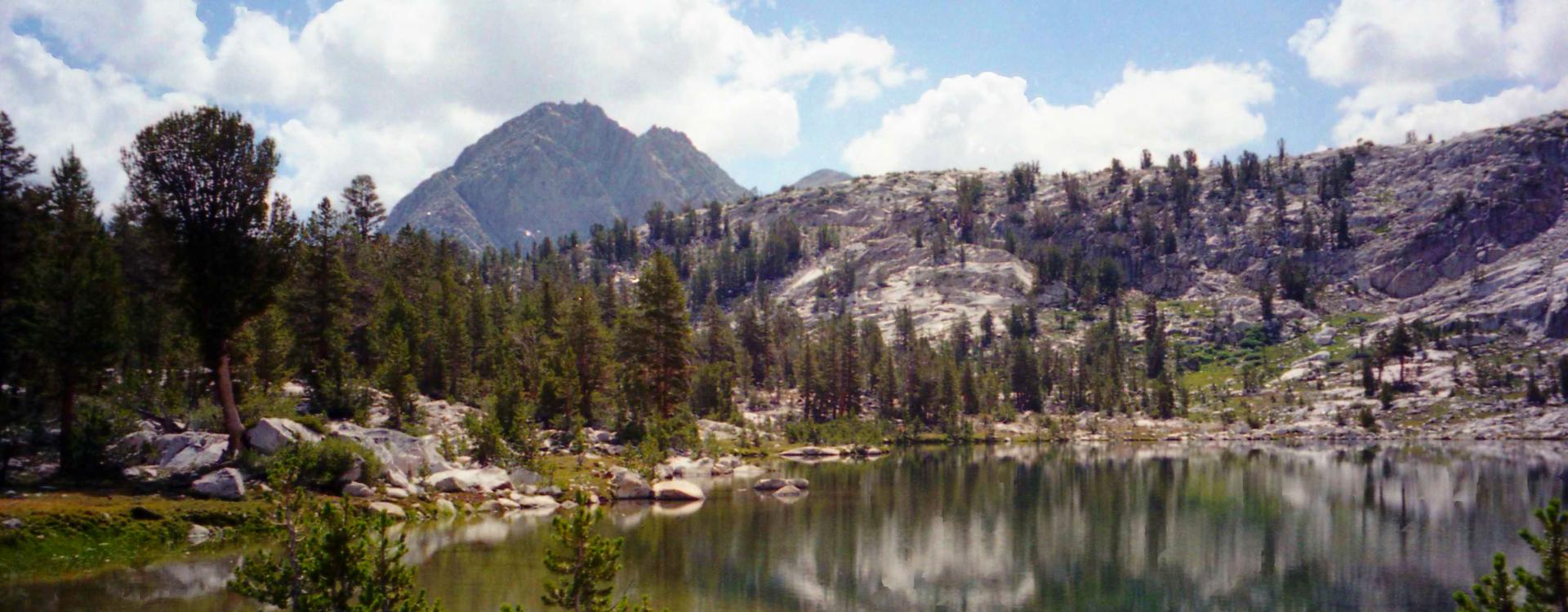
South of Evolution Valley in Kings Canyon National Park. Photo Credit: CC BY 2.0, Tom Hilton
Streams hide an underwater world of tiny insects in a fantastically varied web of life.
Why species are found where within streams, however, remains rather mysterious. Many theories have sought to explain biodiversity patterns within ecosystems in general, and river networks in particular. But findings have been limited to specific types of rivers, such as those flowing through forests. The overarching processes driving stream ecosystem organization — knowledge critical to guide biodiversity conservation efforts — haven’t been fully understood.
Now, a team including UC Santa Barbara research biologist David Herbst, and based at the university’s Sierra Nevada Aquatic Research Laboratory (SNARL) in Mammoth Lakes, has detailed new insights in the journal Ecological Monographs. They report finding several distinct patterns of diversity common to their stream and lake networks that, taken together, point toward several mechanisms that both foster diversity and sort species across aquatic environments.
Building on previous work by Herbst, graduate student Matthew Green, of UC Riverside, and colleagues examined the aquatic invertebrates living along networks of streams and lakes in the high alpine zone of the Sierra Nevada. Many of these organisms are larval forms of insects such as stoneflies and caddisflies.
The new study’s roots date back about fifteen years, when Herbst surveyed aquatic invertebrates in two Sequoia-Kings Canyon National Park stream-lake networks for the National Park Service. Realizing that the existing dataset would be an ideal foundation upon which to build, Green expanded it with his own stream diversity surveys, for a grand total of five networks and a whopping 118 sites sampled.
One of the team’s major findings was that headwaters differed the most from each other in terms of species types. An existing theory called the “small but mighty headwaters hypothesis” suggested this result.
The scientists also found that local diversity increased downstream from a waterway’s headwaters. In other words, they found a greater variety of animals farther away from the stream’s origins.
The exception to that finding was at the outlets of lakes. These sites, where broad lake banks constrict back into streams, harbored the fewest species of all.
The data collected in this study will help to further scientific understanding of what species rear in alpine streams.
Field operations for this project were run out of SNARL, one of seven UC Santa Barbara-administered sites that are part of the 39-site UC Natural Reserve System (NRS).
“Having access to the reserves is really huge for research like this, for being in close proximity to field sites and having a scientific community to bounce ideas off of,” Green said.
The NRS supported this project over several years. A Mildred E. Mathias Graduate Research Grant and Valentine Eastern Sierra Reserve Graduate Research Grant helped with transportation and general supplies, plus reserve accommodations and lab use. A fellowship with the Institute for the Study of the Ecological Effects of Climate Impacts (ISEECI), which encouraged graduate students to document and analyze climate shifts at NRS reserves, enabled Green to purchase much of his field equipment.
Kurt E. Anderson and Marko J. Spasojevic, both of UC Riverside, also contributed to this research.